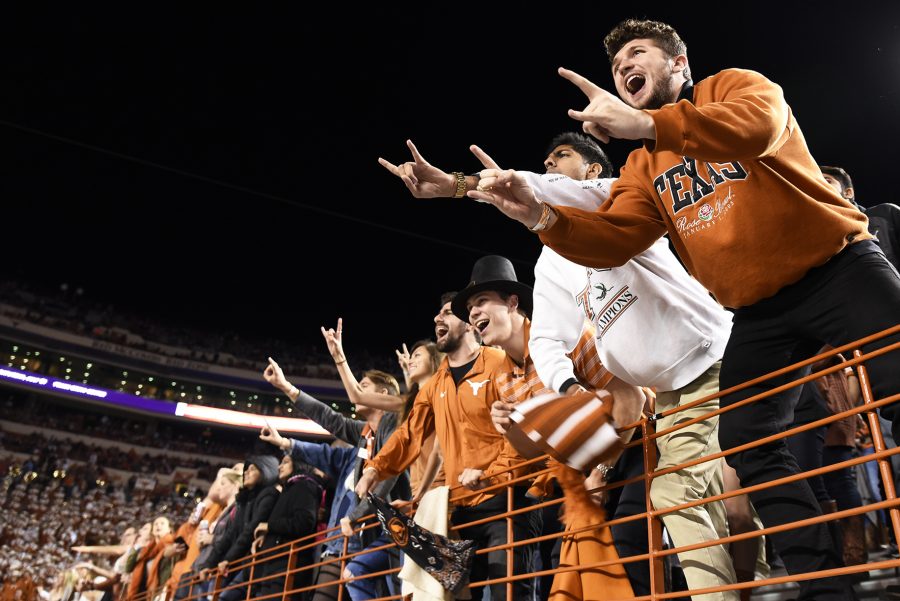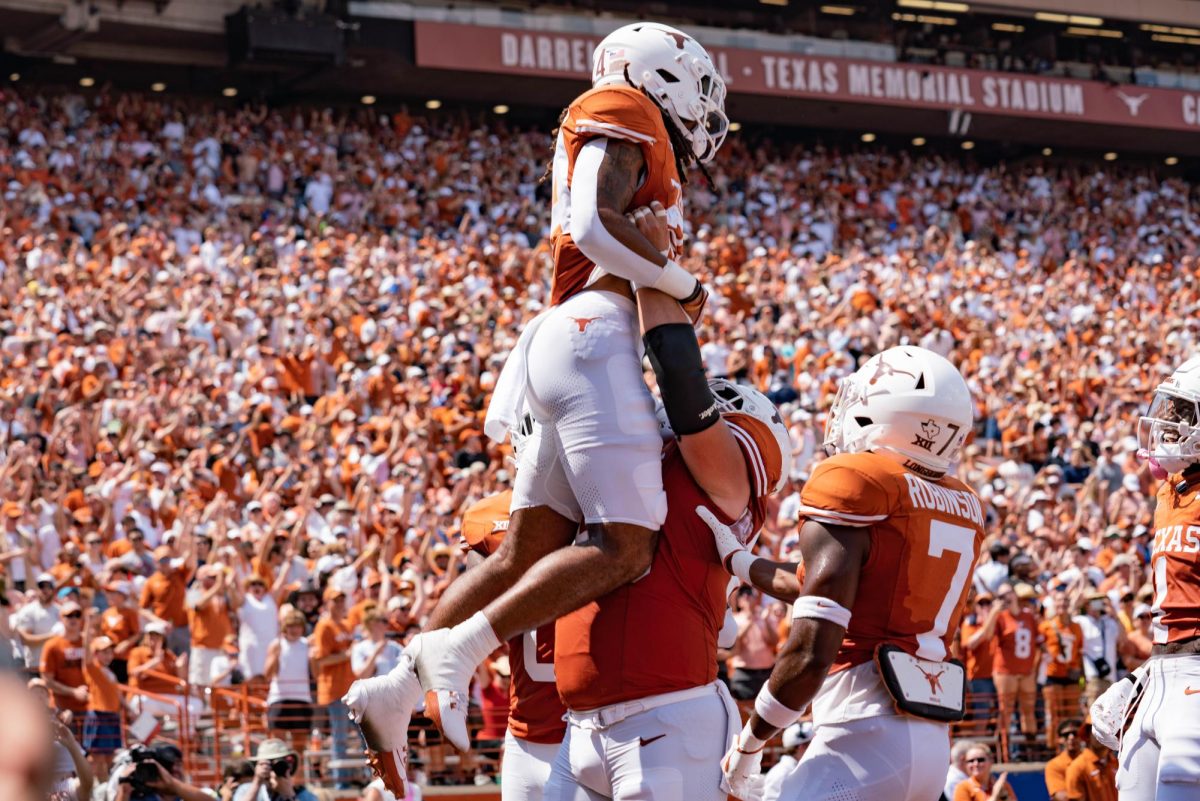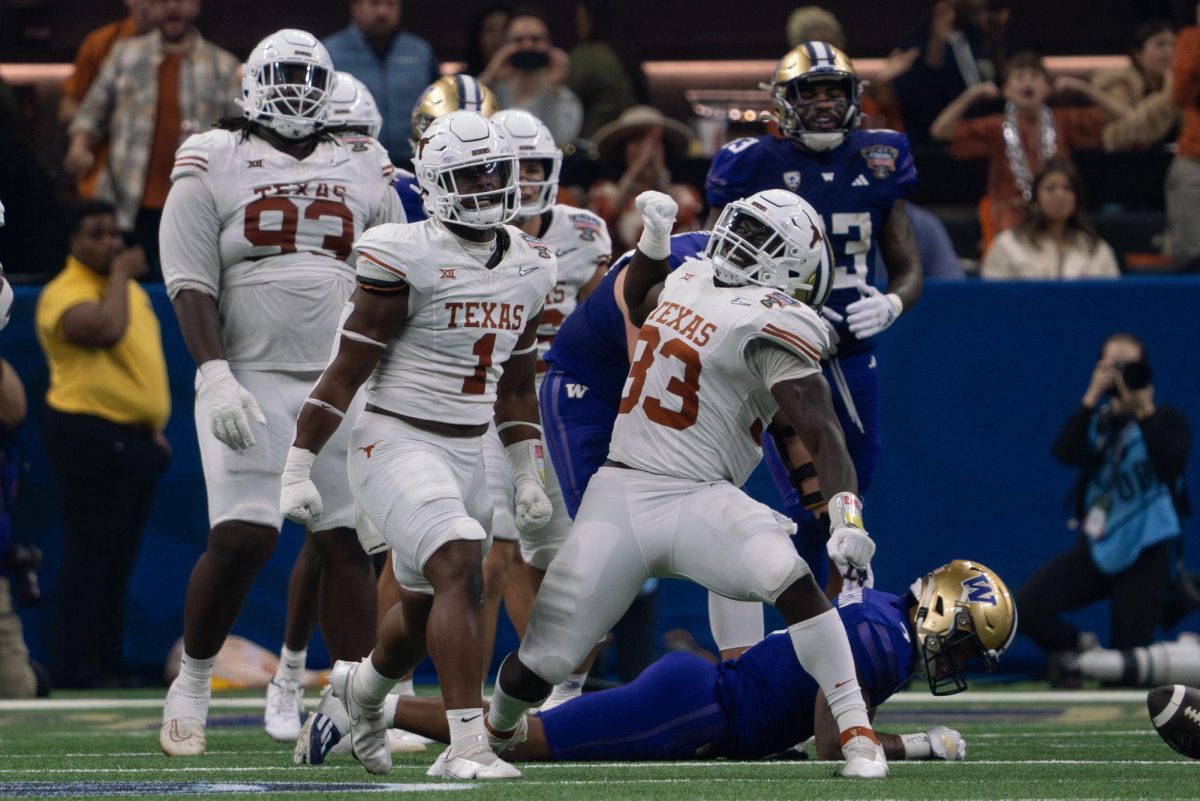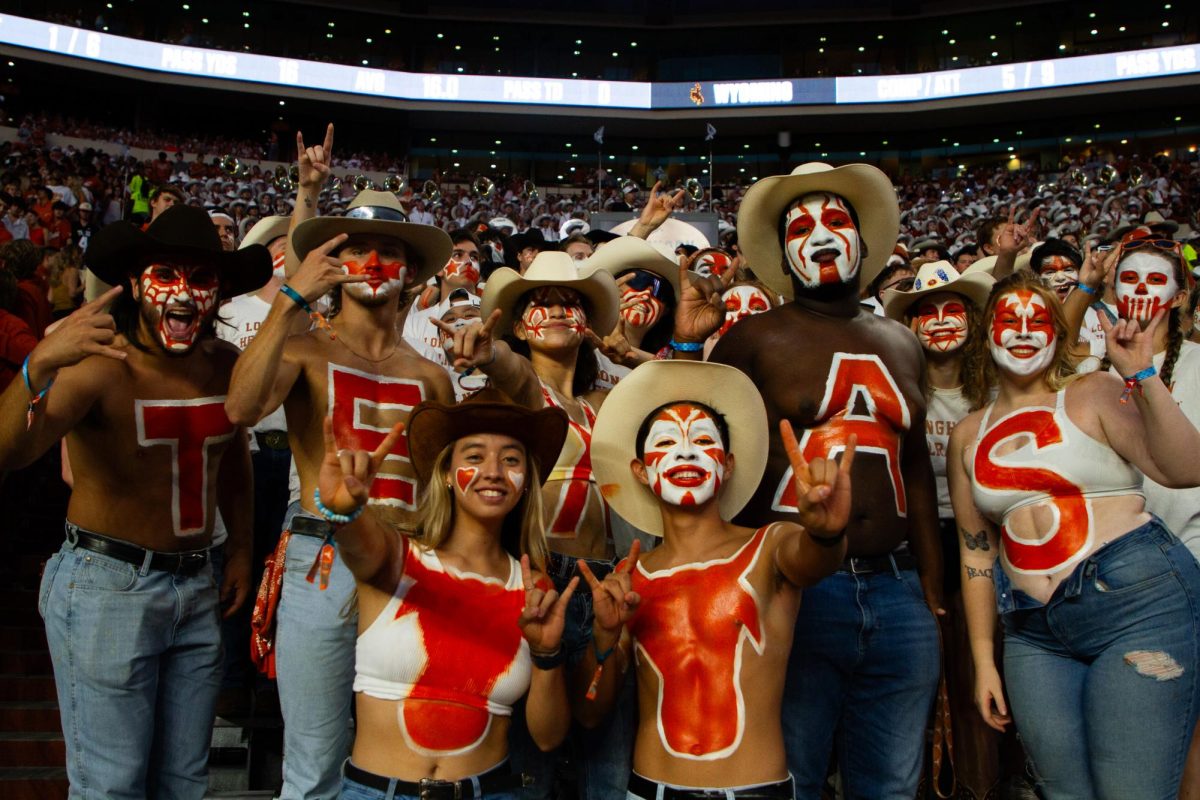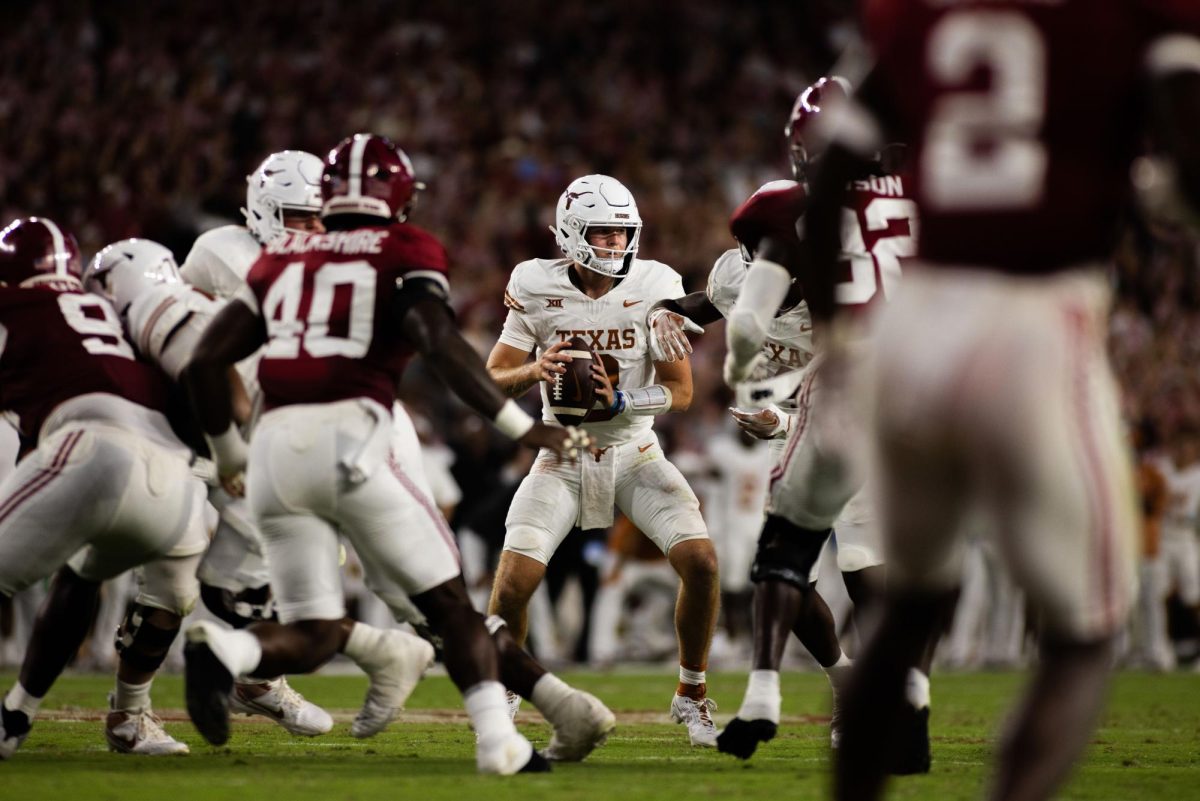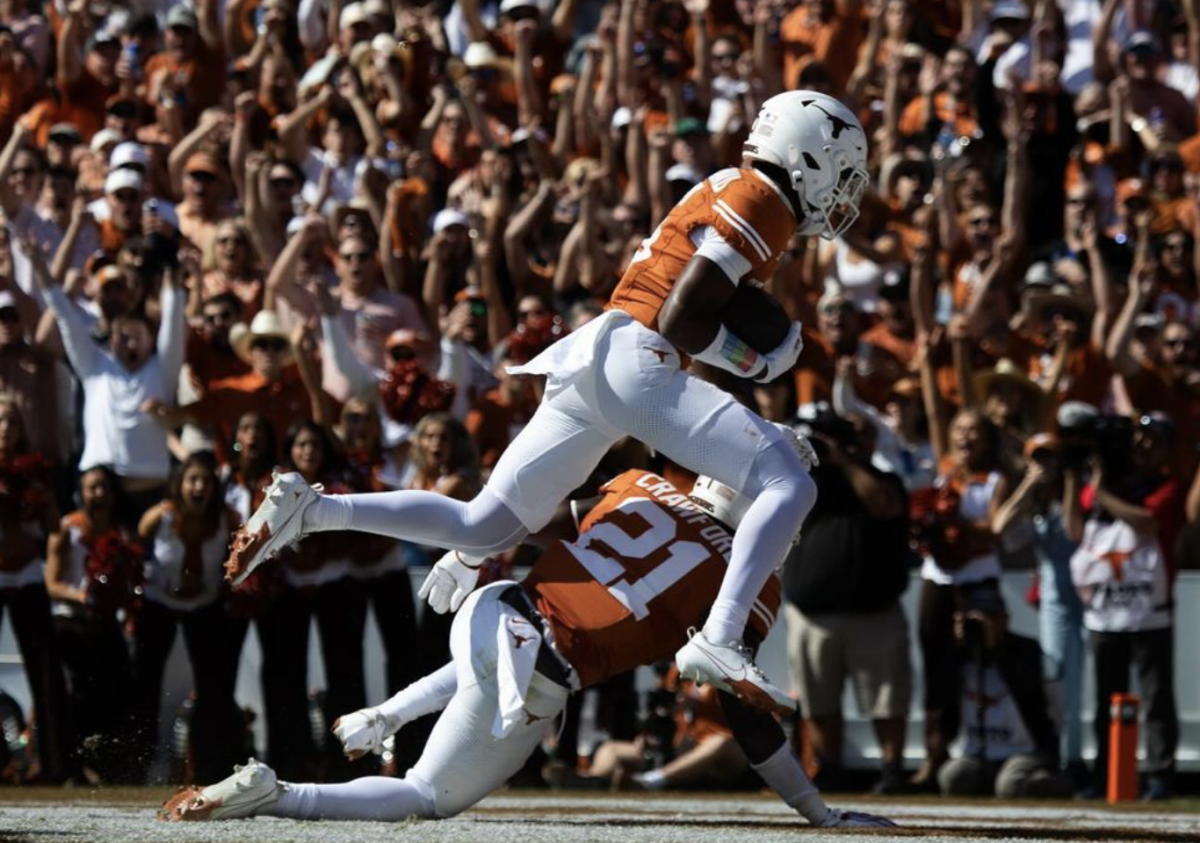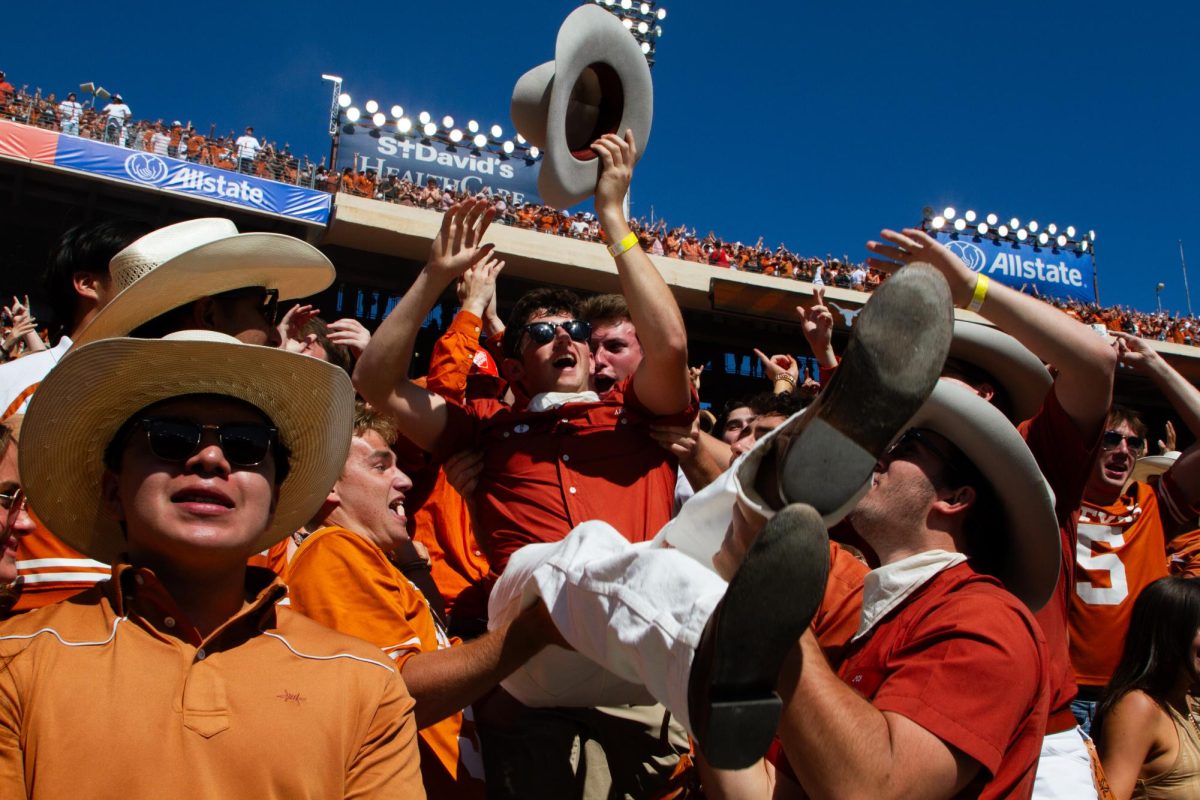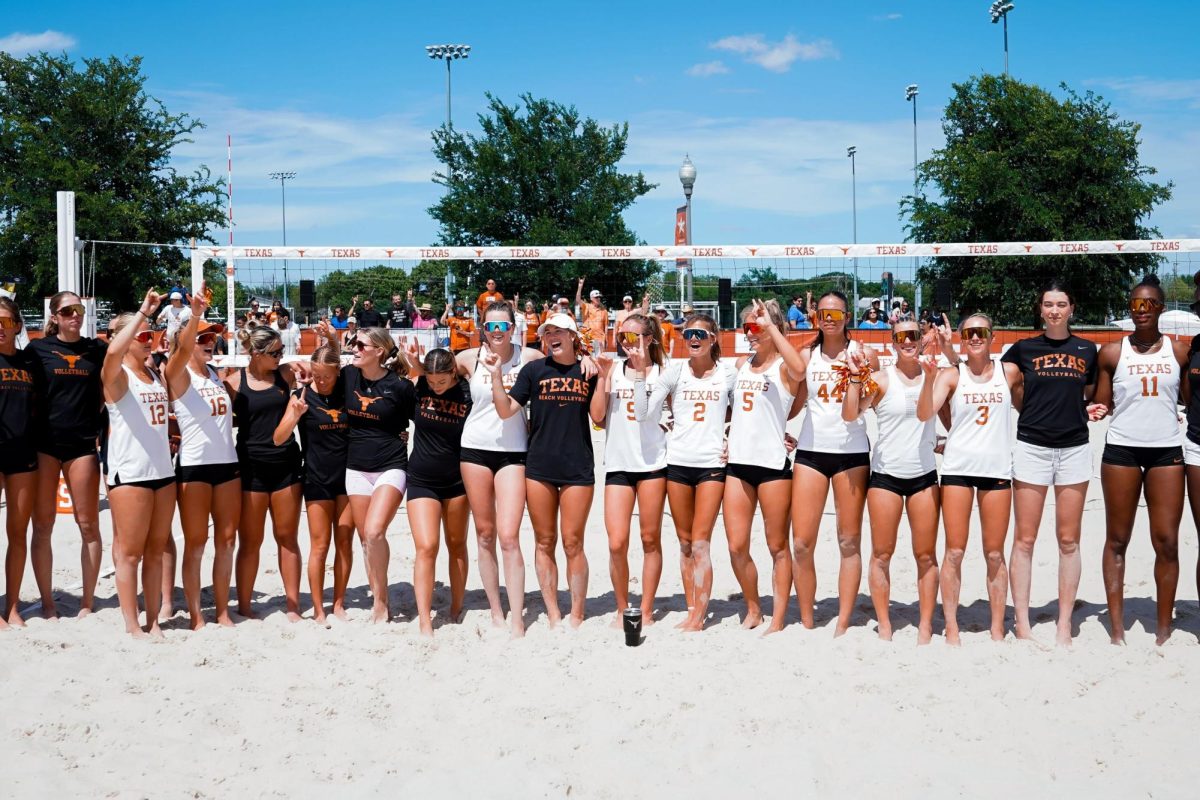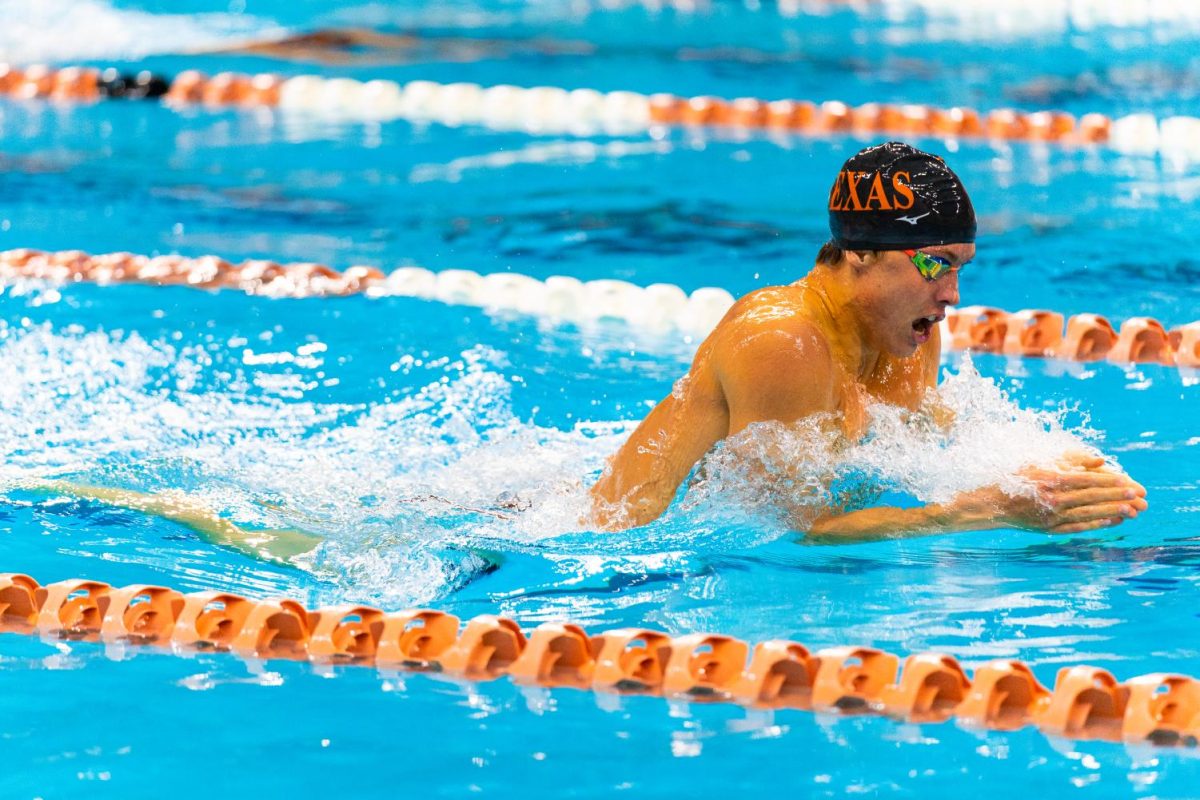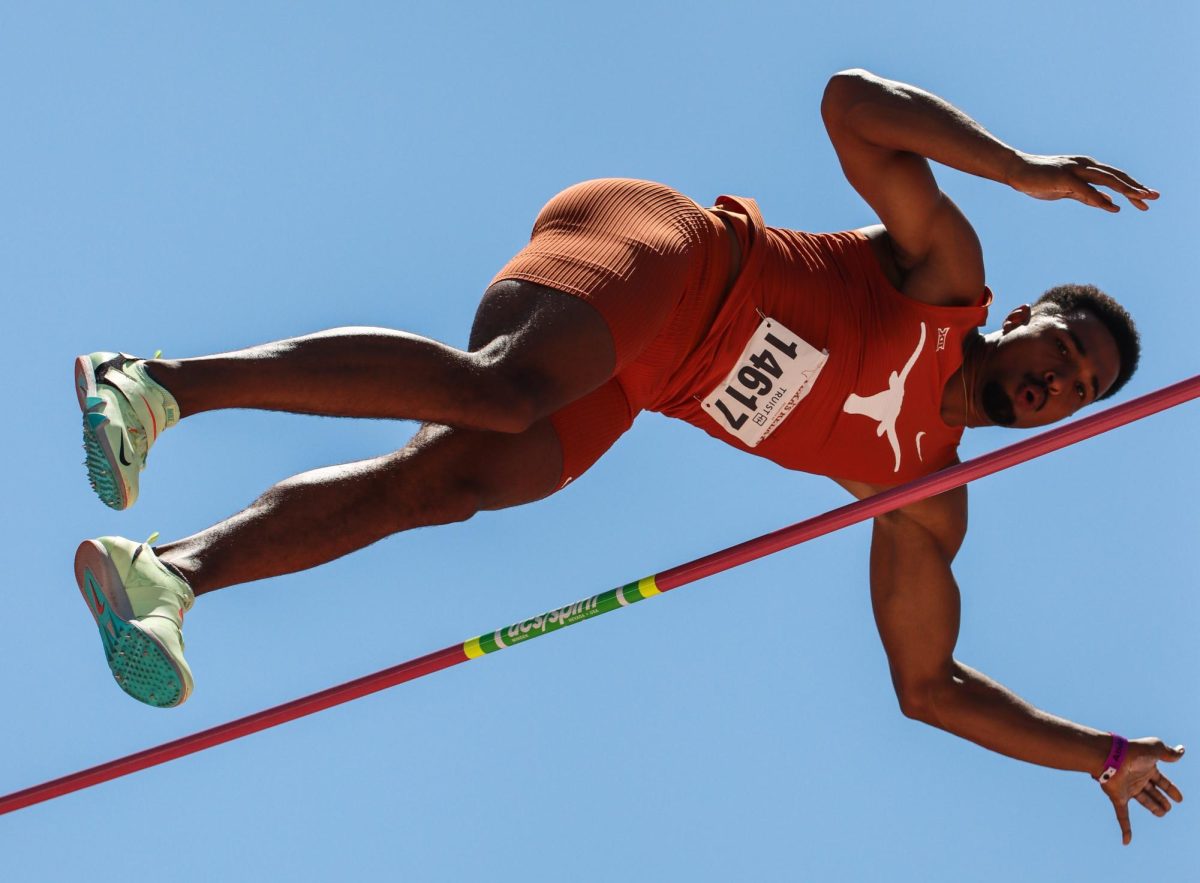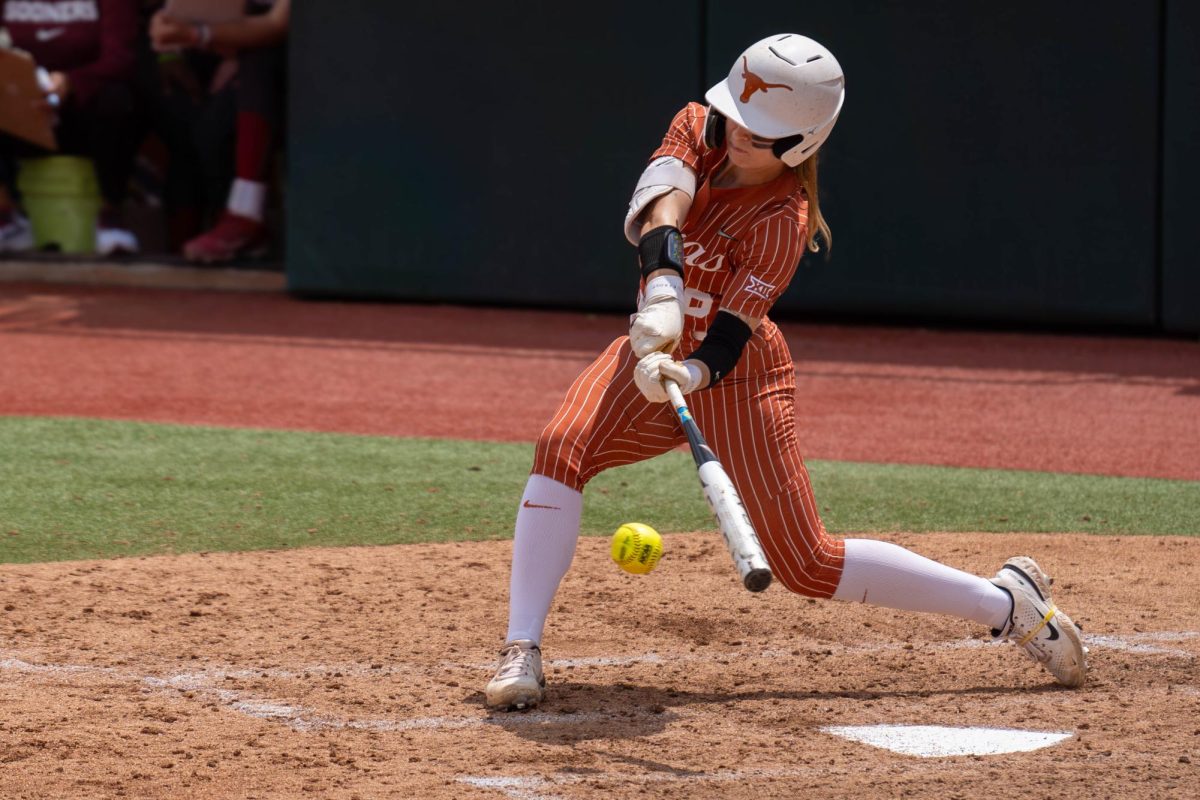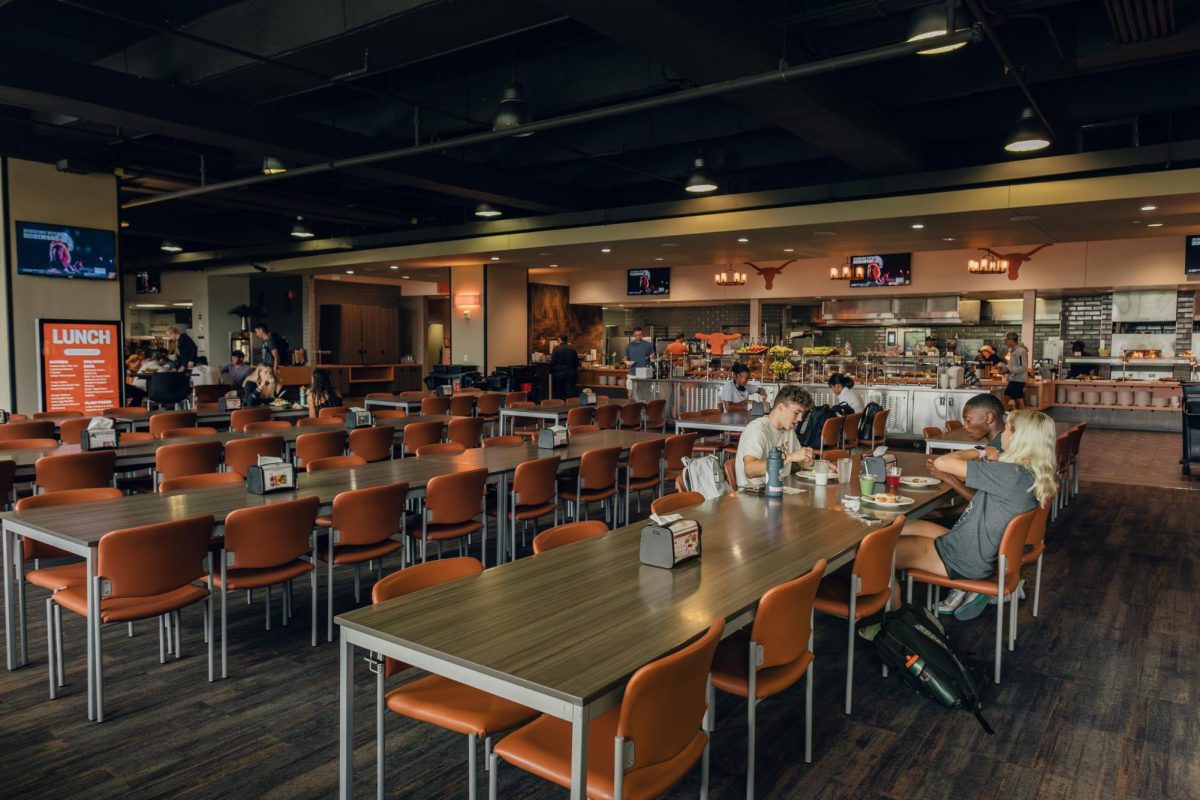All it took was a time lapse of Darrell K Royal-Texas Memorial Stadium on Oct. 21 to realize there was a significant issue.
Brad Wolff, the assistant director of Student Government’s Longhorn Athletic Agency, distinctly remembers making a trip up to the operations booth in the stadium that day during Texas’ game against Oklahoma State. That was the first time he fully understood just how big of a problem student seating at football games was.
He watched a side-by-side time lapse of the student section. What should have been an electric atmosphere for the Longhorns’ matchup with then-No. 10 Oklahoma State turned into anything but. What Wolff saw from the operations booth made one thing clear: something needed to change — and sooner rather than later.
As 11 a.m. struck and the game began, sections in the lower northeast corner, where hundreds of students usually reside, revealed gaping holes of empty seats.
“It was the 10th-ranked team,” Wolff said. “At the same time, we had concerns about that early kickoff, but analyzing that data on my end, we ultimately realized it didn’t really matter what time kickoff was — that students weren’t showing up regardless.”
Texas lost to the Cowboys that day in overtime, 13-10, which was perhaps the most heart-wrenching loss in a season that had plenty of them. But the overtime loss wasn’t the only thing Texas head coach Tom Herman was asked about during his weekly press conference the following Monday.
He was also asked about the largely empty student section.
“I was disappointed,” Herman said. “We’ve got to win. Everybody loves a winner. So some of that is on us. I was disappointed that we had performed to the point where the students had that kind of apathy for it.”
That even came after Texas football’s seemingly immediate changes upon Herman’s arrival in Austin which focused on an increase in student interaction, such as the student appreciation practice held last spring.
“We even, the first couple games, tried to do a little ‘swag surf’ with (the students) as we left the field. That wasn’t as big a hit as I thought it would be,” Herman said. “And so, we got to do better. The marketing and fan engagement, student engagement people need to do better. I need to do better, we all need to do better and the students need to do better.”
But Herman wasn’t the only person on the sideline who noticed the lacking student attendance against Oklahoma State.
“Yeah, it sucks. But that’s their decision,” junior linebacker Malik Jefferson said the following week. “I guess (the students) had better things to do, and I’m not gonna point fingers or be mad at them. It’s their life, it’s their choice. They do whatever they want.”
Although the student section eventually appeared to fill in a bit more against Oklahoma State, it wasn’t until later in the game. But before the lacking student attendance on that October day, there was the season opener against Maryland on Sept. 2.
The student section experienced a plethora of issues during that game due to overcrowding in certain sections in the northeast corner. This led to the installation of a new wristband policy, which remained in place for the rest of the season. It required students in sections 26–28 to pick up special wristbands at Mike A. Myers Stadium across the street before entering the football game.
It also forced people who didn’t have a wristband to remain in their respective section. Brooke Daily, who graduated from UT in December with a degree in youth and community studies, experienced the wristband policy and tougher seating enforcement up close.
“Security (was) checking wristband colors, literally walking up and down the rows in the middle of the game,” Daily said. “And they (made) them move immediately, even standing there to watch them move. It was the third quarter and no one was around, and I watched a guy make a group of four move over all of about 10 feet to the right section.”
Wolff and other members of SG began meeting with former athletic director Mike Perrin during the season on a possible solution for the student seating issues, including a move to general admission. Wolff said they met throughout the semester, but the push for general admission was nothing new for Perrin.
“The idea of general admission was raised with me almost two years ago,” Perrin said. “We had already begun renewals of season tickets when it was first brought to my attention by Student Government leaders, and it was simply too late to make changes for that season.”
On Jan. 11, however, Texas Athletics announced that not only was there an end to the wristband policy, but that there will be a contiguous, general admission student section in the lower southeast corner and south end zone starting next season.
“We will hope that the seating changes will create a more energetic atmosphere in the stadium,” Perrin said. “ … If the students are energized and the music is reverberating around the stadium, it just creates a much more enjoyable fan experience.”
The new policy will create a first-come, first-serve system, meaning the students who show up earliest will be rewarded by getting the seat of their choice. It isn’t a guarantee that a stronger student section will result, but it won’t force students to pick up a wristband, and it will allow students to sit wherever and with whoever they want.
This new seating structure has been several years in the making, but Perrin said he keeps a list of things he thinks about working on — and this issue had remained on the list until he got it done.
“I think it’s important that the students know that Mr. Perrin, knowing that he’s retiring this year, is still willing to speak to students all year,” Wolff said, “and was willing to really make this change no matter what it took.”



